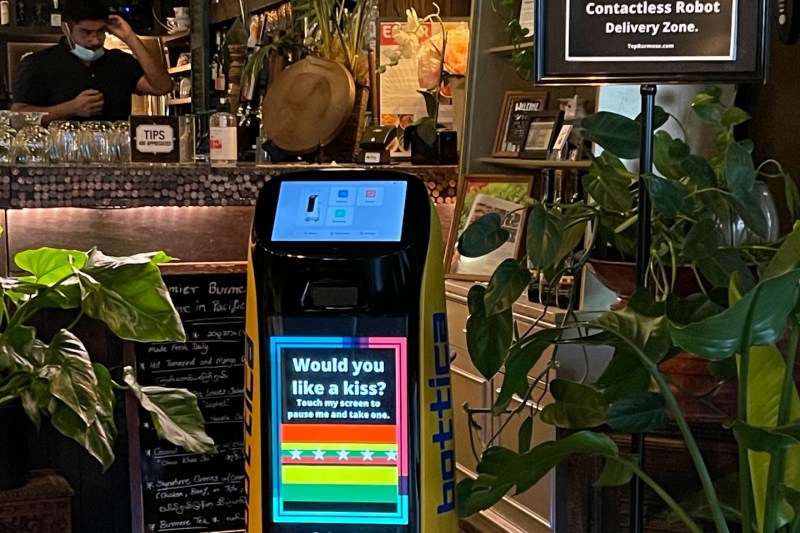One of the first things you notice at Top Burmese, an eclectic restaurant located in the Portland metro area, is the robot. His name is Milo and he’s providing the restaurant staff some much needed help. Amid a climate of social distancing and overworked restaurant personnel, Milo is something of a saving grace.
Related Reading
Robots at Top Burmese

Kalvin Myint is the managing partner at Top Burmese. He says his team started working with a bot back in 2020, as many restaurants were starting to softly reopen. Now, he employs a dozen robots across three restaurants.
“That was the first-time restaurants were allowed to have indoor dining since the beginning of the pandemic,” Myint recalls. “No vaccinations were available at that time, so we brought our first robot Milo as an additional social distancing layer between our staff and customers.”
He admits there’s a playful element to it all and customers seem to take to the novelty. But there’s a real practicality at work as well. “Our robots assisted our servers and bussers by carrying large heavy trays of food, from the kitchen to the tables and vice versa,” Myint says. “Our staff can now focus more on hospitality and leaving the burden of carrying anything heavy or dangerous to the robots.”
Milo and his bot brethren put in real shifts. Myint says they log 100 miles a month at his eateries, with heavy dishes, trays, and more in hand. You’re unlikely to hear a single complaint from these happy-go-lucky helpers, and don’t write them off as lacking intelligence as the robots are surprisingly sophisticated.
Restaurant Robot SLAM Technology

The robots use SLAM (Simultaneous Localization and Mapping) to bounce between destinations and they do so without any collisions or hiccups. Safe mobility is achieved via sonar and motion cameras. They are invaluable when it comes to doling out the more mechanical tasks of restaurant work.
“We mainly use our robots as guest escorts, food runners, bussing and kitchen assistants,” Myint says. “Our human servers take the orders, even though our robots have that capability, we believe humans do best in describing the food, what it tastes like, and recommendations.”
So far, the response has been great, among both customers and restaurant staff. Dining there is enjoyable in its own right, especially when chowing down on dishes like tamarind hot wings, green tea leaf salad, or okra curry. But doing so in the company of Milo and his siblings makes it a fun and futuristic experience. With advances in tech always bubbling up, these robots will only become more helpful and involved down the road.
“I expect them [robots] to become more interactive as we embrace robots of various kinds to improve our lives,” Myint predicts. “They will become more personal like our smartphones, cars, and other gadgets.”
It’s a fitting touch to a small chain of restaurant that abides by the tagline, “Ancient recipes, modern accommodations.” It was the first restaurant to bring Burmese cuisine to Oregon. It was also the first outfit in Oregon to bring in robots for help. Now, restaurants across the globe are considering bringing on forms of artificial intelligence as we navigate the new normal.


